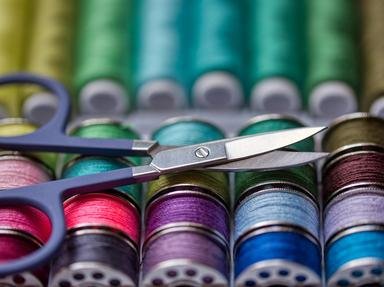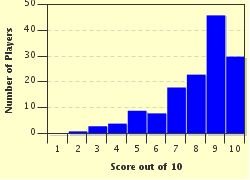Quiz Answer Key and Fun Facts
1. What is the name given to the thin and sometimes intricately carved wooden spools used in lace-making?
2. American Samuel Briskman was credited with inventing what sewing accessory in 1931?
3. I was trying to explain this unusual rounded-shaped object to a fun guy on I met my sewing course. What is it?
4. Which of these is NOT a type of sewing needle?
5. What was the name given to an ornate silver chain worn around a housekeeper's or seamstress's waist, often with sewing accessories attached?
6. As the predecessor to the embroidery hoop, which sewing frame accessory was used primarily during the 18th century, as shown in this image of Madame de Pompadour?
7. Many people know them as mannequins, but what is the correct name for the three-dimensional dummy that is used in dressmaking?
8. An etui is the name given to a small ornamental case used to hold sewing supplies. True or false?
9. In the anatomy of the sewing machine, which of these is the name of an attachment used to keep the material flat while you are sewing?
10. My needlework box contains many items including buttons, ribbons, braiding, zippers, pins, seam rippers, and all sorts of fripperies and bibelots. Collectively these are known as what in the sewing world?
Source: Author
Plodd
This quiz was reviewed by FunTrivia editor
WesleyCrusher before going online.
Any errors found in FunTrivia content are routinely corrected through our feedback system.

